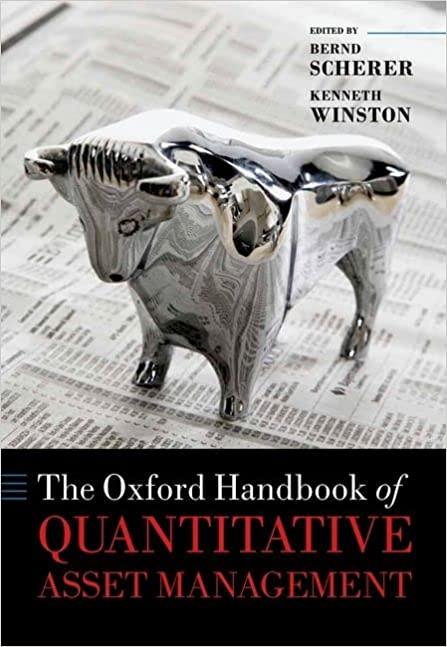Question
How Part-Time Work Became a $40 Million Business Called drybar Read the case and answer the questions that follow. Studying this case will help you
How Part-Time Work Became a $40 Million Business Called drybar Read the case and answer the questions that follow.
Studying this case will help you better understand how concepts relating to entrepreneurship can be applied in a company such as Drybar. After her children were born, Alli Webb wanted to work part time. She decided to apply her training and experience as a hairstylist to offer services in clients homes. Her additional background in publicity would help her build the business by word of mouth. Webb also identified an opportunity: She would focus on providing only blowouts, washing and blow-drying the clients hair. This method delivers a great look at a lower costand at a lower price for the clientthan having hair dyed, cut, or permed. People loved the idea, and soon Webb had more jobs than she could handle on her own, although she now admits that the earnings barely covered her costs. Still, Webb persevered; the toughest management challenge was finding enough money to keep up with the growth in demand. Her first step in expansion was to form a corporation, Drybar Holdings, and open a shop in Brentwood, an upscale part of Los Angeles. Webb and her husband tapped into their own savings and approached Webbs brother, Michael Landau, about investing $250,000. They determined that for the idea to succeed, the salon would need to attract at least 20 to 30 customers per day. In fact, within the first few hours of opening, the salon was booked solid for six weeks. Landau was on board, and additional family and friends later invested a total of $1 million in the business. The companys continued success then attracted $2.5 million from angel investors and later $21 million from a private-equity firm. With that funding, Drybar has grown to 32 salons, $40 million in annual revenues, and 2,000 employees, including stylists a departure from most salons, where stylists are independent contractors. On average, each salon provides 60 to 100 blowouts every day, with many repeat customers who have discovered what an affordable luxury a 40-minute, $40 blowout can be. The high number of blowouts helps make each shop more profitable than a traditional hair salon would be. Now that Drybar is a big company, Webbs role has changed. Whereas she first built her business on her skill as a stylist, she now uses that knowledge to establish and monitor standards for her employees. She also established detailed requirements for the design of each salon and the ways stylists should interact with their customers. One feature of a Drybar blowout, for example, involves clients sitting so that they face away from the mirrors. When the blowdrying is done, the stylist whirls the clients chair around so that the client has the thrill of seeing the finished hairdo in all its glory. Webb also led the creation of a line of Drybar hair care products, using feedback from her stylists to guide the products development. Managing the business has affected Drybars other founders as well. Webb, her husband (who used his advertising experience to become the companys creative director), and her brother (who applied his business experience from Yahoo! and leadership of a marketing firm to the role of Drybar CEO) could not run a multimillion-dollar business on their own. Drybar therefore hired John Heffner whose experience in consumer goods includes a position as president of OPI Products, a maker of nail care products, to be Drybars new CEO. However, Drybars success has led to a new kind of risk: Others see the intense demand for the blowout procedure, so competitors, including chains such as Blo and DreamDry, are entering the market. Webbs strategy is to continue focusing on high-quality service to maintain the advantage of being the first to enter the business.55
Questions
1.What kind of opportunity did Alli Webb identify? How
did entrepreneurial alertness, information asymmetry,
and social networks shape her success?
2. What kinds of entrepreneurial risks has Webb faced?
How will greater competition affect the level of risk?
3.What role has financing played in Drybars success?
What other sources of financing could Webb and her
management team consider?
Step by Step Solution
There are 3 Steps involved in it
Step: 1

Get Instant Access to Expert-Tailored Solutions
See step-by-step solutions with expert insights and AI powered tools for academic success
Step: 2

Step: 3

Ace Your Homework with AI
Get the answers you need in no time with our AI-driven, step-by-step assistance
Get Started


